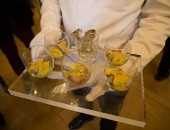"...it is an illusion to attempt to understand through scientific proof something that you believe in." Manfred Klett
More and more viticulturists are attracted by biodynamics’ holistic approach and focus on soil optimisation and vine health. Inorganic inputs are minimised in favour of home-made preparations and composts. Many viticulturists are, however, daunted by biodynamics’ roots in anthroposophy and the anecdotal evidence of increased costs in terms of vineyard maintenance (see article 'Where's the belief' on FineWineMagazine.com). This article sets out to summarise some of the reasons why domain owners believe the investments for converting to biodynamics (BD) are justified, cost supplements and savings, and the extent to which economies of scale may apply to BD operations.
In the 1920s Dr Rudolf Steiner Note 1Steiner's credentials include: the Goetheanum, the international headquarters of Anthroposophy based in Dornach, Switzerland; the Camphill schools/communities for those with special needs; Eurythmy; Anthroposophical medicine;Waldorf schools; and biodynamics. gave a series of eight lectures entitled "An Agricultural Course". After Steiner’s third lecture his host, Count Keyserlingk, accompanied Steiner to supper. Steiner took the count’s arm and gazing upon him in the benign manner of a prophet towards a disciple enquired whether the count had understood the lecture. "Not a word, Herr Doktor!" replied the Count Note 2Manfredd Klett. Principles of Biodynamic Spray and Compost Preparations. Floris Books, 2006.. So was born the movement of biodynamics. One might be forgiven for thinking that tracking the costs of a BD enterprise might be hard to pinpoint.
Aubert de Villaine, of Domaine de la Romanée Conti, explains the many complicating factors relevant to any analysis of the cost involved in practising biodynamics:
"If you adopt the techniques, recipes and procedures of biodynamics and carry these through to some preconceived notion of the doses, dates and times and methods to use... it will be a disaster… it’s a philosophy. Each vigneron has their own idea how many times they may wish or need to employ a preparation during the year, its dose or the parcels to which it may be applied. There are recipes for creating the preparations and sprays, but there are no specific schedules and quantities for their application. The use of tisanes and their functions will vary depending on the circumstances of the particular vineyard. No year is the same. This kind of viticulture where one feels part of a system rather than in a more traditional environment makes the whole costing exercise far more complex."
The Research
There are limited scientific articles comparing the operational costs of conventional and biodynamic viticulture, nor can one find a specific study on the cost of growing wine grapes biodynamically, nor comparisons with conventional viticulture in Europe with other parts of the world Note 3 Irina Santiago. Biodynamics vs. Conventional Viticulture in Australia: A comparison of Costs and Operations. Doctoral thesis. School of Agriculture, Food andWine. University of Adelaide, November 2010. It is also worth pointing out that this study drew no distinction in operational efficiency since to do so only "highlights variations in management practise". Note: the project results only relate to the operational costs of those variables that were identified as potentially different between the two systems. . In Switzerland, a study (2006) which looked into the differences between organic and traditional methods over a period of seven years from 1998 to 2004 found that because of a high incidence of oidium the costs of protecting the vineyard from this threat was approximately 40% higher largely due to the cost of labour and mechanisation involved. Note 4 Ch. Linder, O.Viret and J-L Spring. P Droz. D Dupuis. Viticulture intégrée et bio-organique: synthèse de sept ans d’observations. Agridea, 2006. However, a recent thesis concluded (excluding any cost impact from harvesting and pruning estimated at 50% of total operational costs) that "biodynamic viticulture is a financially feasible way to grow high quality grapes without the use of synthetic chemicals" Note 5 Irina Santiago. Biodynamics vs. Conventional Viticulture in Australia: A comparison of Costs and Operations. Doctoral thesis. School of Agriculture, Food and Wine. University of Adelaide, November 2010. It is also worth pointing out that this study drew no distinction in operational efficiency since to do so only 'highlights variations in management practise'. Note: the project results only relate to the operational costs of those variables that were identified as potentially different between the two systems. . It didn’t consider the extension of BD into the cellar where most commentators agree BD is cheaper (although the costs are less significant).
Cost savings
There are, of course, many cost savings associated with BD: fertilisers and pesticides are the main ones and in the cellar the use of natural over commercial yeasts. A biodynamic producer wouldn't probably own a centrifuge, for example; they would undertake fewer oenological surveys. After bottling, other additional expenses might be incurred depending on the estate's objectives: sourcing boxes locally (as opposed to China, say), recycled paper for the labels and so forth.
The areas of cost
There are two approaches to cost analysis: the margins created by the work undertaken or an examination of the direct costs. Obviously, there may be an improvement in margin by being certified "biodynamic". An increase in the price one can sell a wine may stem from its perceived quality and method of production which may well balance or even exceed the additional costs involved. One can’t stop a producer joining in simply as a sales ploy. Some might argue this is not a positive step in itself, but Melissa Brown, of Gemtree Vineyards in Australia, is quite straightforward on this point: "It is why we are undergoing certification. With so many wine brands on the market today we need a point of difference and we are aiming to establish ourselves as leaders in sustainability."
The impact on direct costs for an estate is divided into the following main areas: an increase in labour costs in the vineyard, substitution of bought-in fertilisers and pesticides and the costs associated with this, specific investments in specialised equipment and a reduction in yield.
Olivier Humbrecht MW, owner of Domaine Zind Humbrecht, has been operating biodynamically for many years and has considered the cost aspects of his work in some detail. He gives many examples. "Not all conventionally managed vineyards will necessarily be negligent of their vineyard and its management but even so probably 90% would use heavy machines in winter when the soil is very fragile, in order to gain working time in winter, whereas 90% of biodynamic producers would not."
This practice would cost a BD producer an increase of labour costs of about 10-15%. All additional labour employed (which is the biggest cost in BD) has an in-built additional cost – management. Humbrecht also highlights the costs in adding composts to the vineyard: "Compare the spreading costs compared to the use of nitrate pellets used by conventional farmers. Why use compost anyway? The impact in ecological terms is already considerable: using two to three tons/hectare (equivalent to 100kg of pure nitrates) of compost, say, every two to three years means 10 times less nitrates are used."
Humbrecht explains three main reasons for compost use:
"1. Soil structure: it brings fresh organic matter (humus) which will migrate down into the soil. This helps to stabilise the minerals in the clay which are so vital to the vine and aid against soil erosion. Without stabilisation these essential components are lost by horizontal and vertical erosion. 2. Increased microbial activity which feed the vine. 3. Energising: a more obscure reason is the way the compost is treated in biodynamic farming (through preparations), which effectively energises the compost bringing their own characteristics to the vineyard."
Many biodynamic producers run small estates – given the apparent complexity and high labour use this is hardly surprising. But according to Melissa Brown, who runs 110ha in Australia: "I have not noticed a significant difference in costs from conventional to biodynamic. I continue to use sulphur for powdery mildew protection and copper for downy mildew, as if an outbreak occurred my vineyard is too large for me to get across it in a short time frame and I am not prepared to risk losing the crop. Our pest problems have decreased as a result of increased biodiversity in the vineyard. One of the reasons I have undertaken this path is with climate change in mind and due to the drought conditions that can be experienced here. The increase of humus in the soil is reducing the reliance on irrigation as humus can hold up to 90% of its weight in water. I do think that our yields are decreasing; however, we have no firm proof
at this stage."
| Increased costs | Savings | |
| Marketing | • | |
| Reviews | • | |
| Inorganic chemicals | • | |
| Compost and nutrition | • | |
| Slower development of new vines | • | |
| Labour | • | |
| Weeding | • | |
| Yield reduction | • | |
| Ploughing | • | |
| Vinification | • | |
| Machinery | • | |
| Specialised cellar equipment | • | |
| Yeasts | • | |
| Pest and disease control | • | |
| Vine longevity | • | |
|
This excludes certain incalculable advantages such as the contentment and health of the staff. Source: Fabian Cobb |
||
This seems to be corroborated by the recent Australian research which identified from its sample that economies of scale existed: "When comparing the total operational costs of vineyards at all BD stages with conventional vineyards of the same size, the total costs are 12% higher for small vineyards and 63% higher for medium vineyards, but 2% lower for large vineyards." Note 6(1) Small – up to 3 hectares; (2) Medium – from 3.1 to 9.9 hectares; and (3) Large – above 10 hectares. Initially the group had another subdivision – from 10 to 20 hectares and above 20 hectares. However, the differences in operational costs between the two second largest subdivisions were not sufficiently significant to justify such a grouping.
Indeed, the study identifies where the cost comparisons diverge highlighting in their findings that BD is more expensive in so far as it relates to under-vine management costs but that, generally, BD vineyards have lower canopy management costs. It goes on to say: "Further research is necessary to investigate whether biodynamic viticulture promotes healthier vines (reducing management costs), as the theory claims."
Conclusion
While viticulturists themselves seem to rely on predominantly anecdotal evidence for the cost benefits, it may seem odd, unjustifiable even, to go to so much trouble to produce a wine which is hard to explain to a consumer in terms of taste. Aubert de Villaine says: "If you had asked me this question 10-15 years ago I would have said there had been no amelioration in the wine quality. But today I would say differently. We are in the business of patience and humility; this is not an immediate change. The grapes now have a better maturity, I would describe it as a finesse de maturité. This does not stem only from BD, but BD has permitted us to take the steps which bring us this 'finesse in maturity'."
| Conventional | Biodynamic | |
| (per ha.) | (per ha.) | |
| Herbicide | €300-400 | |
| Pesticides | €1,700-2,200 | €1,200 |
| Fertiliser | €300 | €200 |
| Spreading | €100 | €300-500 |
| Specialised equipment | €100-150,000 | |
| Ploughing | €1,000 | |
| Maintenance | €1,000 | |
| Hedging | €300 | €300 |
| Hedge knitting | €1,600 | |
| Staff | €4,000 | €20,000 |
| Production | 10,000bts/ ha | 5-6,000bts/ha |
| Costs per bottle Note 7highest estimate/number of bottles | €0.73/bottle | €4.28/bottle |
Source: compiled by Fabian Cobb using figures supplied by Olivier Humbrecht, MW. Surprisingly, the smaller, more specialised equipment used by the BD producer costs significantly more than a larger heavier machine used by traditional growers due to the relative volumes of the machines produced. |
||
The exploration of relative costs in the field of biodynamics is still in its infancy. The complexity of such a study is exaggerated by the different methods employed and the period of study required. In a report published in 2005 Note 8 Jennifer R Reeve, L Carpenter-Boggs, John P Reganold, Alan L York, Glenn McGourty, and Leo P McCloskey. Soil and Winegrape Quality in Biodynamically and Organically Managed Vineyards.American Society for Enology and Viticulture, 2005. the researchers concluded: "In order to fully determine whether the high quality of biodynamic wines reported in the press is a result of the use of the biodynamic preparations or simply a matter of viticultural or oenological practices, an evaluation of wine made from the two treatments would be necessary." They also stressed the need to continue their study over a longer period. As one scientist noted Note 9Dr Emmanuel Bourguignon, directeur du développement, LAMS, France. November, 2011: "We have observed and measured the work we have done on the soils of the vineyard. At the moment biodynamic viticulture is more expensive. But in the long term BD appears to protect the soil and the vines. There are fewer illnesses and a vine lives longer. If one factored in this fact it is probable that BD might cost less."
Few people would dispute the cost benefits of BD to the wider community. In France, for example, viticulture consumes some 20,000 tons of pesticides each year, or 25% of the national tonnage, while vines represent only 3% of the agricultural surface. This use of chemicals has another cost, a human one. A number of studies have shown that the incidence of certain types of illness are 10 to 20 times higher for those working in the agricultural sector – cancers, Parkinson’s disease, Alzheimers, infertility and so forth Note 10Franck Dubourdieu. La Viticulture Biologique, March, 2011. Perhaps one might leave the last word to François Bouchet, one of the pioneers of biodynamic viticulture in Bordeaux, writing in the foreword to his book Note 11François Bouchet. Biodynamic Agriculture (Fifty years of the practice and teaching of biodynamics). Deux Versants 2003.: "It [biodynamics] has filled a large part of my life, and to all those who try to experiment, I can only wish as much happiness along the path as I have found." Ascribing a value to la condition humaine might push the argument into the black.
This article was first published in the Drinks Business, January 2012 under the title "TURNING GREEN?"
References
| ↑1 | Steiner's credentials include: the Goetheanum, the international headquarters of Anthroposophy based in Dornach, Switzerland; the Camphill schools/communities for those with special needs; Eurythmy; Anthroposophical medicine;Waldorf schools; and biodynamics. |
|---|---|
| ↑2 | Manfredd Klett. Principles of Biodynamic Spray and Compost Preparations. Floris Books, 2006. |
| ↑3 | Irina Santiago. Biodynamics vs. Conventional Viticulture in Australia: A comparison of Costs and Operations. Doctoral thesis. School of Agriculture, Food andWine. University of Adelaide, November 2010. It is also worth pointing out that this study drew no distinction in operational efficiency since to do so only "highlights variations in management practise". Note: the project results only relate to the operational costs of those variables that were identified as potentially different between the two systems. |
| ↑4 | Ch. Linder, O.Viret and J-L Spring. P Droz. D Dupuis. Viticulture intégrée et bio-organique: synthèse de sept ans d’observations. Agridea, 2006. |
| ↑5 | Irina Santiago. Biodynamics vs. Conventional Viticulture in Australia: A comparison of Costs and Operations. Doctoral thesis. School of Agriculture, Food and Wine. University of Adelaide, November 2010. It is also worth pointing out that this study drew no distinction in operational efficiency since to do so only 'highlights variations in management practise'. Note: the project results only relate to the operational costs of those variables that were identified as potentially different between the two systems. |
| ↑6 | (1) Small – up to 3 hectares; (2) Medium – from 3.1 to 9.9 hectares; and (3) Large – above 10 hectares. Initially the group had another subdivision – from 10 to 20 hectares and above 20 hectares. However, the differences in operational costs between the two second largest subdivisions were not sufficiently significant to justify such a grouping. |
| ↑7 | highest estimate/number of bottles |
| ↑8 | Jennifer R Reeve, L Carpenter-Boggs, John P Reganold, Alan L York, Glenn McGourty, and Leo P McCloskey. Soil and Winegrape Quality in Biodynamically and Organically Managed Vineyards.American Society for Enology and Viticulture, 2005. |
| ↑9 | Dr Emmanuel Bourguignon, directeur du développement, LAMS, France. November, 2011 |
| ↑10 | Franck Dubourdieu. La Viticulture Biologique, March, 2011 |
| ↑11 | François Bouchet. Biodynamic Agriculture (Fifty years of the practice and teaching of biodynamics). Deux Versants 2003. |










